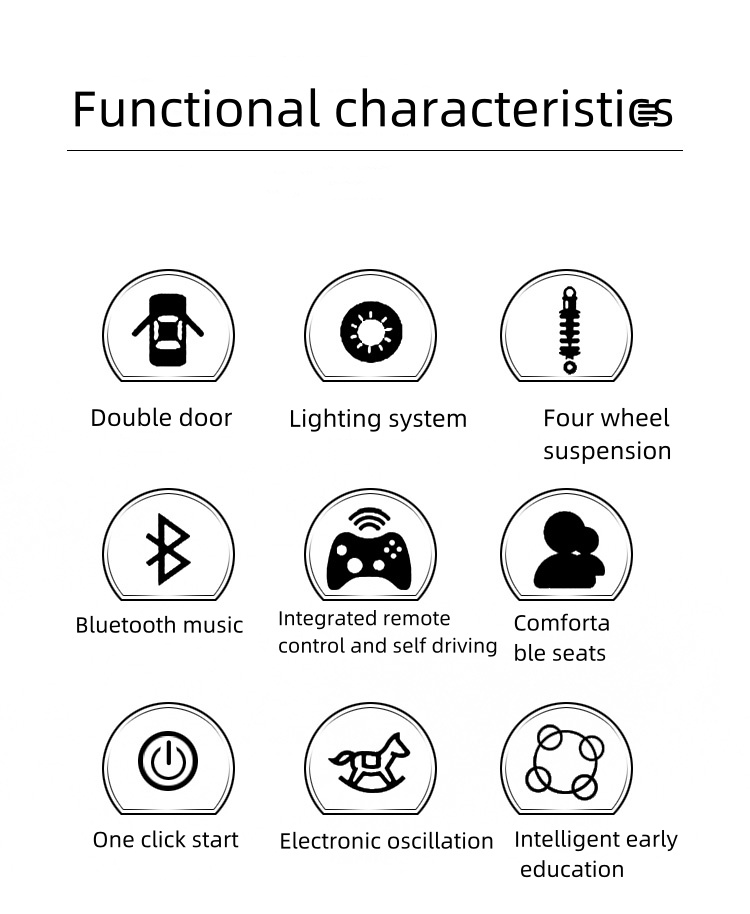Innovative Technologies Behind Self-Balancing Scooters for Enhanced Mobility and Safety
The Technology Behind Self-Balancing Scooters
In recent years, self-balancing scooters, commonly known as hoverboards, have surged in popularity among people of all ages. These two-wheeled personal transportation devices have captivated enthusiasts with their unique design and intuitive operation. At the heart of their functioning lies a sophisticated blend of technology, engineering, and design that enables users to glide effortlessly while maintaining balance.
Fundamentals of Self-Balancing Technology
The key to self-balancing scooters is their reliance on gyroscopic sensors and accelerometers. These sensors are critical in detecting the orientation and motion of the scooter. When a user steps onto the device, the sensors rapidly assess the rider's weight distribution and the angle of inclination. If a rider leans forward, the sensors detect the shift in balance and signal the motors to propel the scooter forward. Conversely, leaning backward prompts the device to slow down or reverse.
Gyroscopic sensors play a crucial role in maintaining equilibrium. They are sensitive to angular velocity, ensuring that any tilt is met with an appropriate response. By continuously communicating with the onboard microcontroller, the sensors facilitate real-time adjustments. This instantaneous feedback loop allows users to navigate smoothly, providing the sensation of gliding as they shift their weight.
Motor and Power Systems
The propulsion of self-balancing scooters is typically powered by electric motors, which are located in each wheel. These motors work in unison to provide the necessary force to keep the scooter balanced and to propel it forward or backward. Most high-quality models use brushless DC motors, which are efficient and reliable. The power system is usually supported by lithium-ion batteries, known for their high energy density and lightweight characteristics. Depending on the model and usage, most batteries can last anywhere from one to several hours on a full charge.
Battery management systems (BMS) have also become integral to self-balancing scooters. These systems help monitor battery health, prevent overcharging, and manage energy consumption. Innovations in BMS technology have improved the safety and longevity of the battery, which is vital considering the high demands of electric propulsion.
User Experience and Safety Features
self balancing scooter technology

User experience is paramount in the design of self-balancing scooters. Manufacturers aim to create an intuitive ride characterized by ease of use. Often, riders are able to master the basics within minutes, making these scooters accessible to individuals regardless of their previous riding experience.
However, with popularity comes responsibility regarding safety. Many modern self-balancing scooters incorporate various safety features, including LED lights for better visibility, durable frames to withstand impacts, and non-slip footpads to ensure grip. Moreover, some advanced models are equipped with proximity sensors that can detect obstacles, alerting riders to potential collisions.
Regulatory and Safety Standards
As self-balancing scooters became more prevalent, regulatory frameworks began emerging to address safety concerns. Many countries have established standards that govern the sale and use of these devices. For example, restrictions on speed limits, weight capacities, and terrain suitability are common regulatory measures. Furthermore, manufacturers are encouraged to meet safety certifications, ensuring that the devices are safe for public use.
The Future of Self-Balancing Scooter Technology
Looking ahead, we can expect further innovation in self-balancing scooter technology. Advancements in battery technology may provide longer ranges and faster charging times, making these scooters even more convenient for daily commutes. Additionally, improvements in AI and machine learning can lead to enhanced balance and responsiveness, allowing for a more seamless user experience.
Moreover, as urban areas continue to seek sustainable transportation solutions, self-balancing scooters may become increasingly integrated into public transit systems. Their compact design makes them ideal for short-distance travel, reducing the stress on urban infrastructure and contributing to environmentally friendly initiatives.
In conclusion, self-balancing scooters are a fascinating manifestation of technology and innovation. Their reliance on sophisticated sensors, efficient electric motors, and the ongoing commitment to user safety makes them a pinnacle of modern personal transportation. As the technology evolves, we can anticipate an exciting future that promises unprecedented mobility solutions for urban dwellers around the globe.
-
Children's Tricycle: Enlarged Seat, Sunshade & Safety Push BarNewsAug.31,2025
-
Sports Kids Bike: High Carbon Steel Argon Arc Welded Frame | Beautiful GiftNewsAug.30,2025
-
Ultimate 24V Children's Car: Power, Fun & Safety for KidsNewsAug.29,2025
-
Children's Electric Car Ride Ons: 2-Seater, Bumper & Audi ModelsNewsAug.28,2025
-
Understanding Voltage in Battery for Children's Motorized CarNewsJun.05,2025
-
Safety Features to Look for in an Electric Car for KidsNewsJun.05,2025
